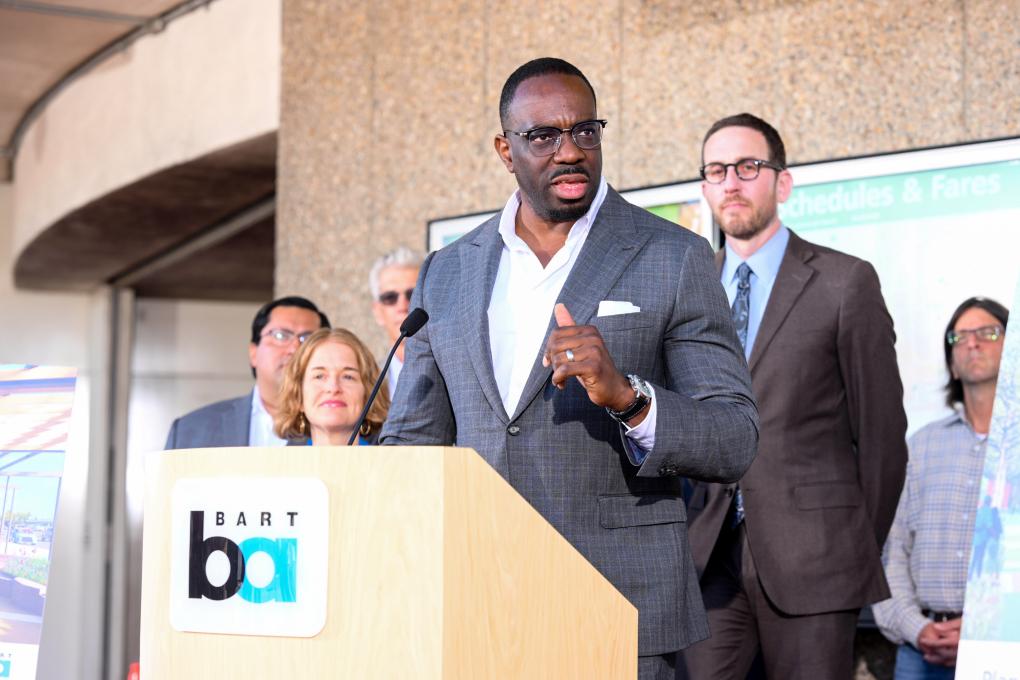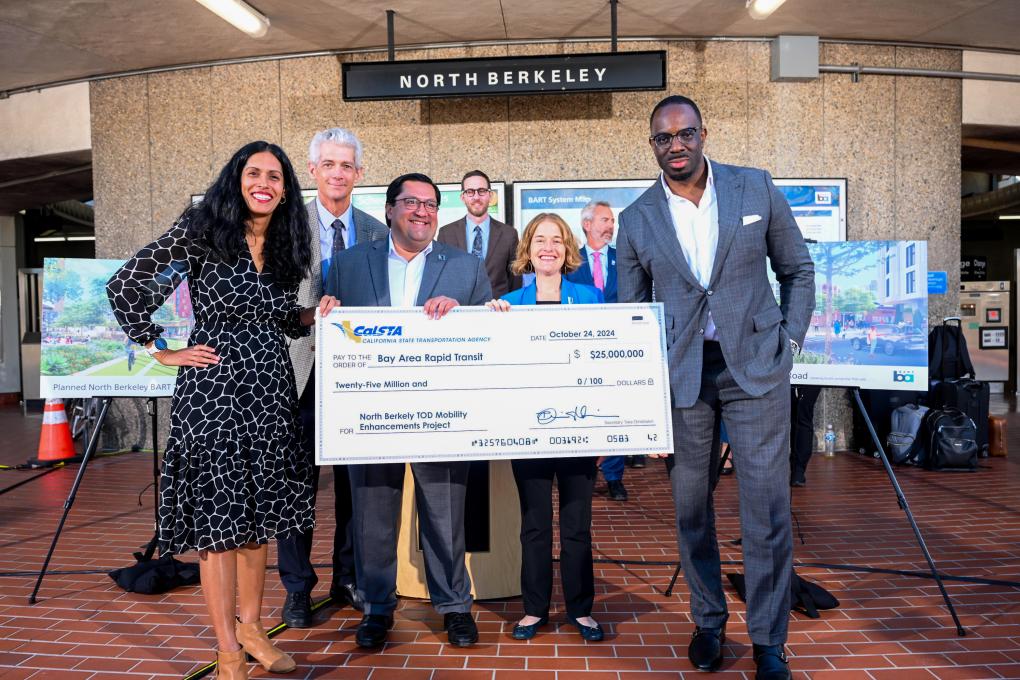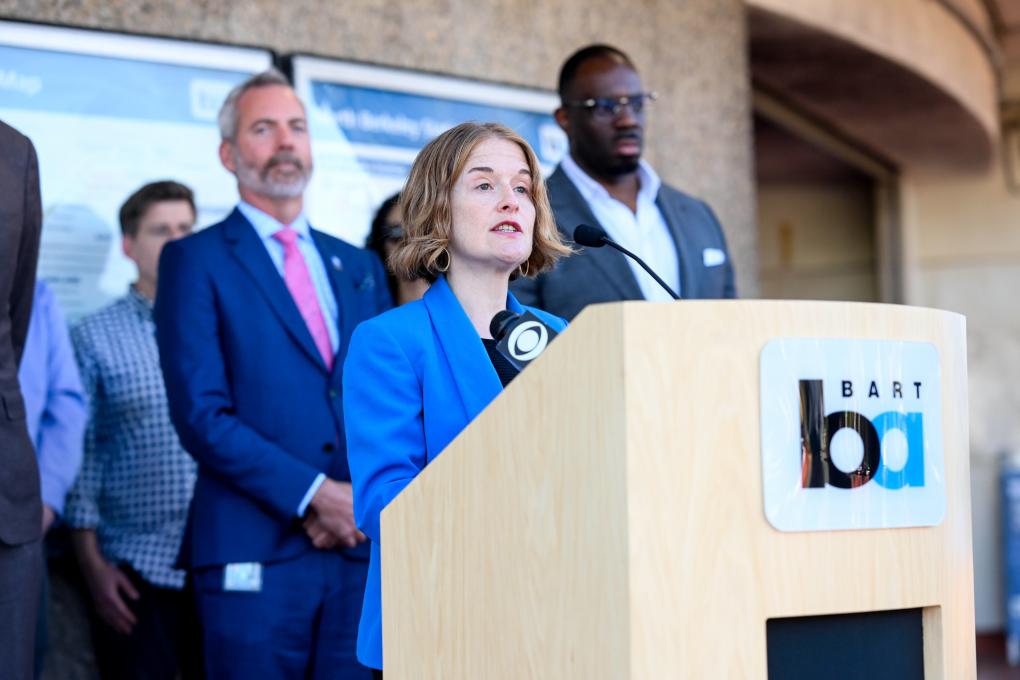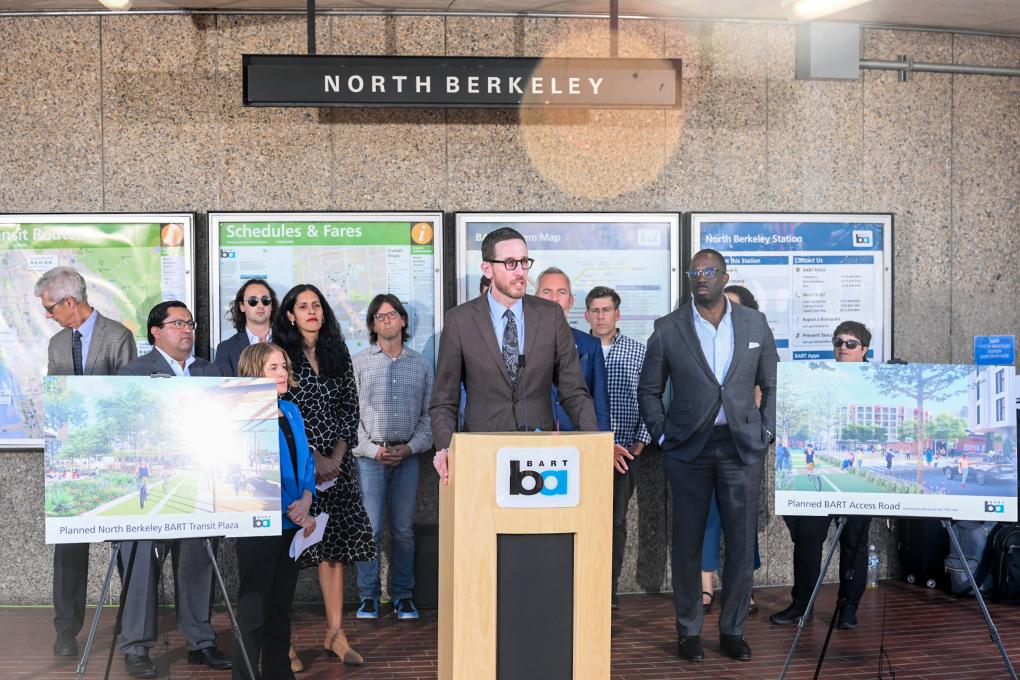Search Results
Everything found in BART’s 30-year-old time capsule
BART releases annual report for 2018
BART has released its Annual Report for 2018. The report describes recent achievements including improved on-time performance and opening of the Antioch extension, and explains how we are working to improve customer satisfaction by reducing the impacts of homelessness on the system. Our approach includes
BART Connects: BART gave a civic architect “a sense of what was possible” for urban design
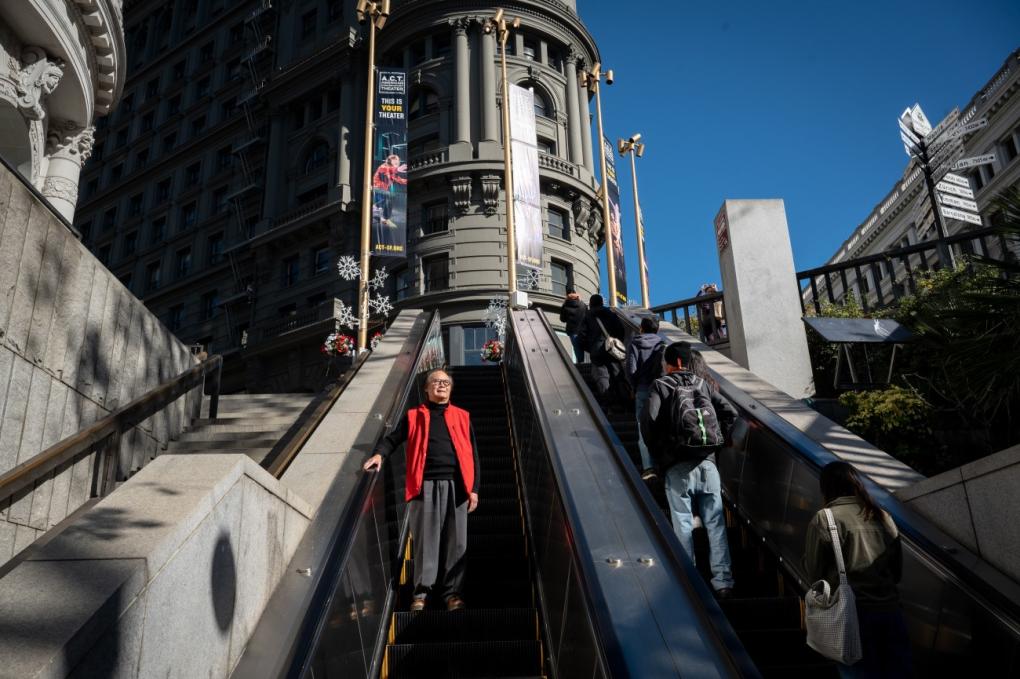
Howard Wong pictured at Powell Street Station.
Do you have a favorite BART memory or story to share? Email a short summary to BART Storyteller Michelle Robertson at [email protected], and she may follow up to schedule an interview.
Howard Wong was born and raised in San Francisco, and like many locals, he depended on public transportation to travel. He remembers well the “old, shaky streetcars and rickety buses” that ferried citizens around the region, and so too, he remembers that it “wasn’t always a pleasant experience.”
A few years after BART opened, he graduated with a master's degree in architecture and design from UC Berkeley. In the program, Wong and his classmates studied the new BART system – its design, its construction, its principles. “It was the biggest project around,” he said. “And it gave you a sense of what was possible.”
When BART first opened in 1972, Wong, who was living in Berkeley, used it mostly to travel around the East Bay. That is, until the Transbay Tube opened in 1974, and he took a joy ride from Berkeley into San Francisco.
“Going through the tunnel for the first time was quite an experience,” he said. “Your ears pop, and it feels like you’re rolling really fast. It gave you the sense of entering this new Space Age era of transportation.”
Wong’s experiences on BART left a lasting impact on him. He said the transit system helped shape his “democratic sensibilities on urban design."
“No matter your class, you had a sense that you were getting special treatment when you rode the trains,” he said.
“You really felt like you were a part of this democracy of benefits,” Wong continued. “You're sitting on a train with all the commuters who seemed much more affluent with their suits and ties and briefcases, but you’re right there on that train with them.”
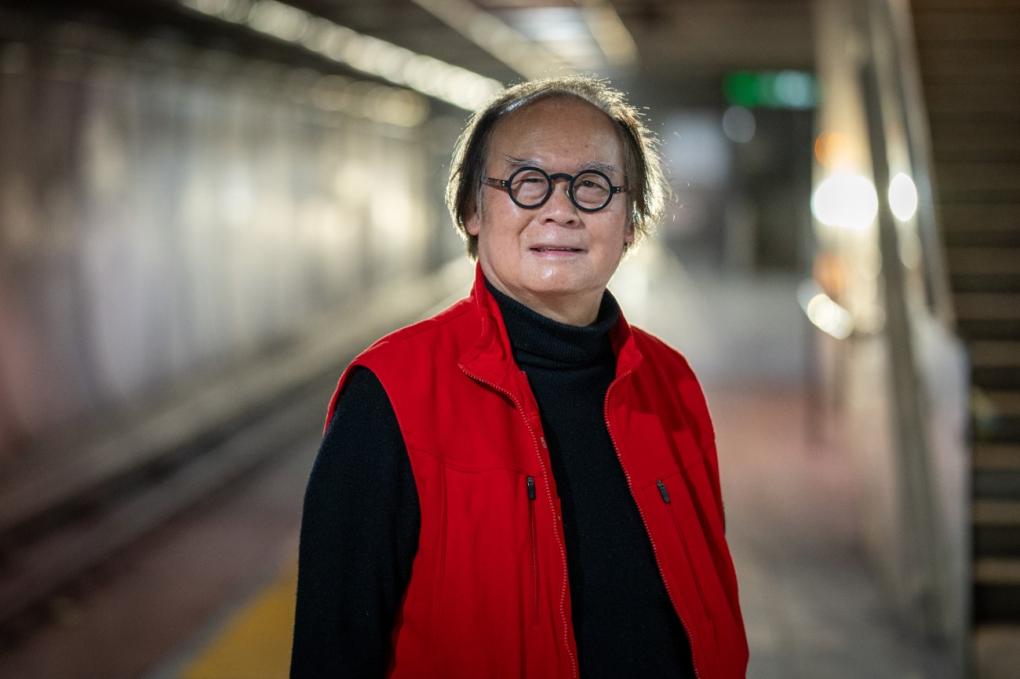
Wong went on to work for a series of Bay Area architectural offices before he was hired as an architect for the City and County of San Francisco.
Wong still remembers his trips from North Beach to San Francisco State, where he earned his undergraduate degree, by way of the old surface M streetcar, a ride that took at least an hour each way. He said when the BART tunnels were built under Market, as well as the Muni Metro tunnels above them, “it was revolutionary.”
He also noticed that after BART opened, smaller bedroom communities quickly transformed into prosperous suburbs – a metamorphosis he attributes largely to the transit system, which enabled suburbanites to easily and affordably commute into San Francisco. He also noticed more businesses, especially higher-end department stores, set up shop along Market Street.
Now retired, Wong remains an avid BART rider. He often takes the train to explore cities outside his hometown as well as to regular haunts around Mission Street and the Berkeley campus. As of late, he’s taken BART to visit Fremont, Orinda, and Walnut Creek. Recently, he rode BART to Berryessa/North San Jose Station to check out the San Jose Flea Market, which he learned about from a BARTable article.
In his 51 years of riding BART, Wong said the public is essential in ensuring the system is around for generations to come. He encourages Bay Area residents to not “forget about transit.”
“You don’t have to take it all the time, but ride it every once and awhile,” he said. “It takes advocacy and support, as well as revenue to improve local transit and to keep it running. The public can help give it a boost, too.”
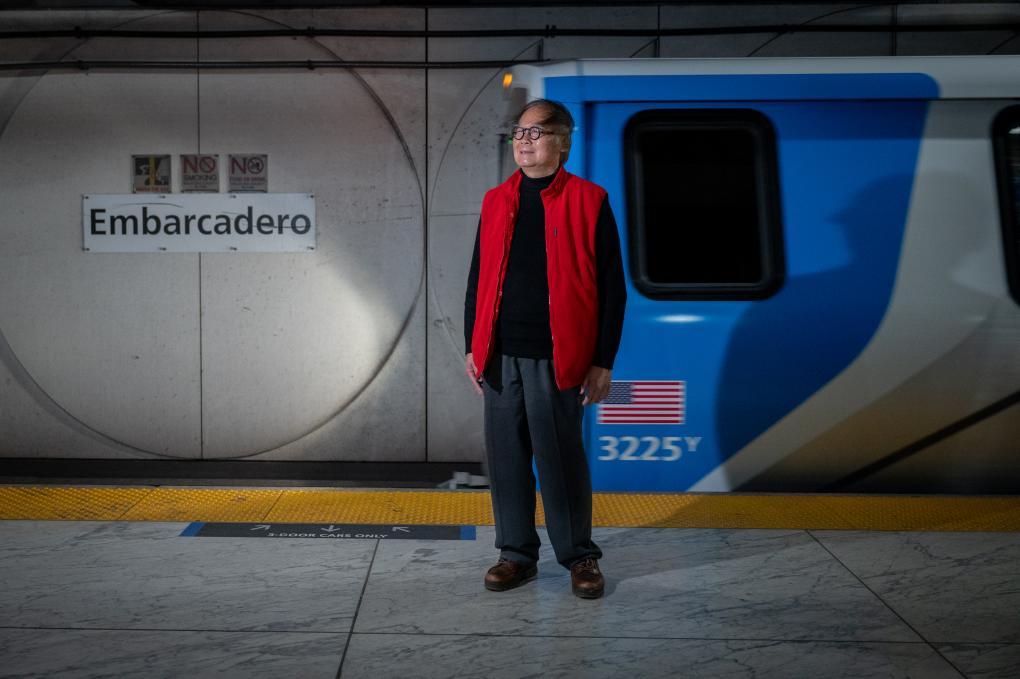
About the BART Connects Storytelling Series
The BART Connects storytelling series was launched in 2023 to showcase the real people who ride and rely on BART and illustrate the manifold ways the system affects their lives. You can follow the ongoing series at bart.gov/news.
The series grew out of BART's Role in the Region Study, which demonstrates BART’s importance to the Bay Area’s mobility, cultural diversity, environmental and economic sustainability. We conducted a call for stories to hear from our riders and understand what BART means to them. The call was publicized on our website, social media, email blasts, and flyering at stations. More than 300 riders responded, and a selection of respondents who opted-in were interviewed for the BART Connects series.
BART Connects: A Bay Area dad uses BART to spend time with his teenaged daughter
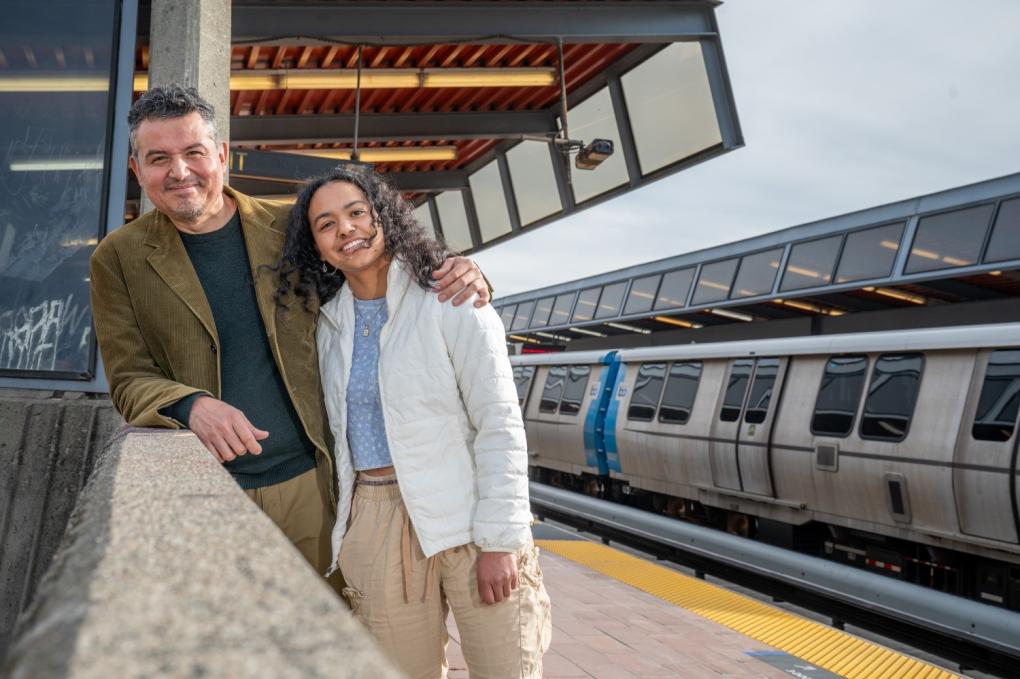
Ed and Elyse Cabrera pictured at Fruitvale Station.
Do you have a favorite BART memory or story to share? Email a short summary to BART Storyteller Michelle Robertson at [email protected], and she may follow up to schedule an interview.
Ed Cabrera spent most of his childhood in San Francisco’s Mission District. When he was two years old, his family immigrated from Guadalajara, Mexico, and they settled on the ground floor of a three-story flat at 18th and Dolores, just a few blocks up from the BART station at 16th.
The Cabreras took BART pretty much everywhere – to school, to appointments, to the library, and especially to visit family in the East Bay. The Cabreras were the last remaining members of their extended family still living in San Francisco, and if they wanted to see grandma and grandpa and the cousins, an eastbound BART ride was required.
Today, Cabrera lives in the Laurel District of Oakland, and now he travels in the reverse direction to hang out with his teenaged daughter, Elyse, when she’s staying with her mom in San Francisco. Cabrera said he regularly uses BART "to facilitate spending time with my daughter and acclimate her to city living.”
Elyse rode BART as a kid here and there – she loved the trains so much the Cabrera household was overrun with Thomas the Tank Engine toys – but she didn’t rely on it like her dad did in his San Francisco youth. Mostly, her parents shuttled her by car to school, social activities, and extracurriculars.
“That was more so because of her mother’s preference, and that was fine. It had its advantages,” Cabrera said. “But it also had a lot of disadvantages.” One being she didn’t spend much time exploring her surroundings outside of a vehicle, he said.
“You don’t want to have a kid who grew up in a city and doesn’t know it,” Cabrera continued. “And there’s no better way to get to know a neighborhood or community than walking, riding transit, and talking to people.”
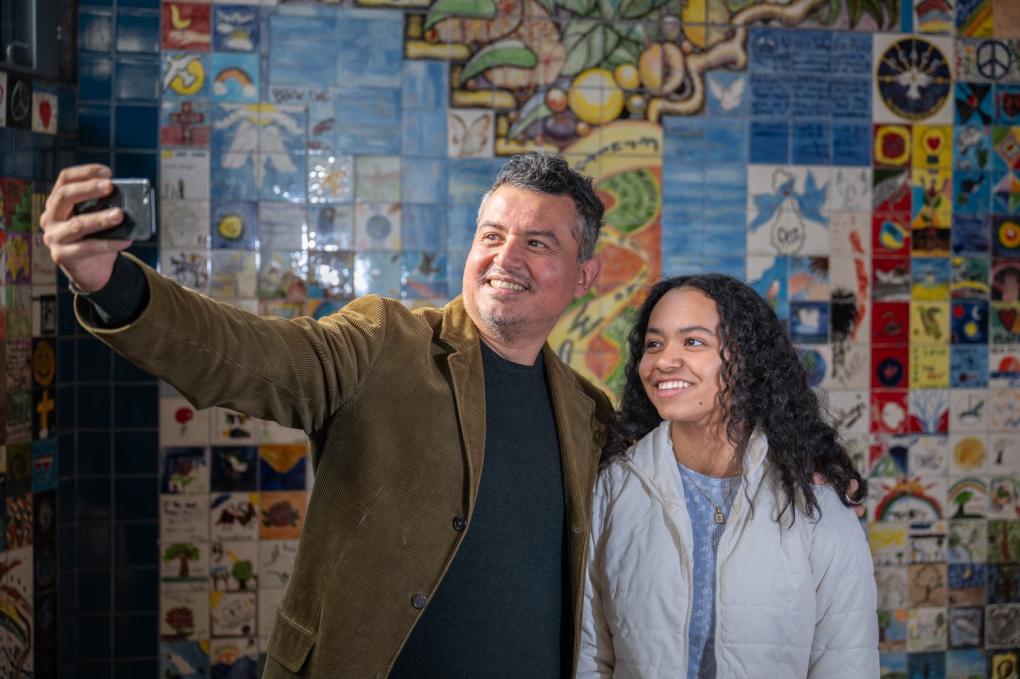
As his daughter grew, Cabrera wanted her to feel comfortable navigating the city independently, so he made a point to “transition Elyse out of the family car” and get her on public transportation to explore the neighborhoods beyond the Portola District, where she grew up.
Soon, Elyse was taking BART and Muni to meet friends at Dolores Park, to hang around the Castro, and to play mini golf at the course in the Mission District.
“It exposed her to different types of people,” Cabrera said. “What better place than BART to get to know the people around you? It’s the great equalizer!”
Cabrera and Elyse now spend much of their time together exploring the Bay Area. He doesn’t own a car, so most often, they take transit. In addition to riding BART to San Francisco to walk around the Mission and the Embarcadero, they’ll get onboard to visit Lake Merritt or head to their climbing gym – Elyse recently got her dad into rock climbing – and sometimes they’ll take it to explore the area’s regional parks. The pair plans to visit the Oyster Bay Regional Shoreline near Coliseum Station when Elyse is home from school.
Cabrera’s next transit challenge is getting Elyse comfortable on a bike. She's now a sophomore in college, and her campus is well-suited to biking.
Beyond getting her around the Bay, BART has also changed Elyse’s life, her father said. She's currently studying aerospace engineering, and Cabrera credits her interest in the field to early experiences riding BART and looking out the windows of the SFO AirTrain, watching the motion of the planes on the tarmac.
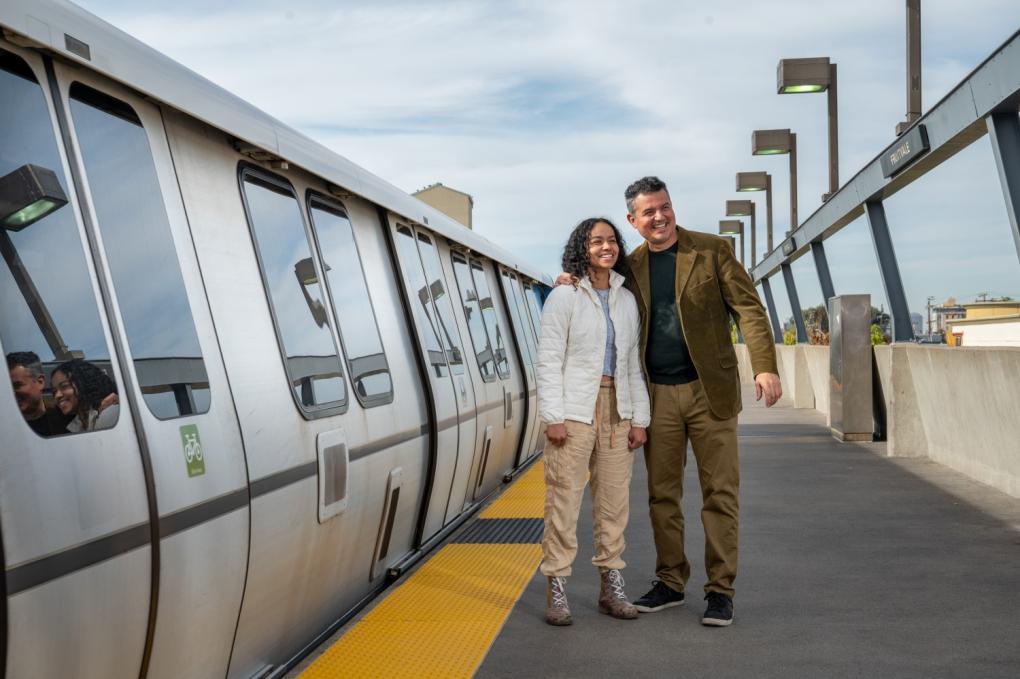
About the BART Connects Storytelling Series
The BART Connects storytelling series was launched in 2023 to showcase the real people who ride and rely on BART and illustrate the manifold ways the system affects their lives. You can follow the ongoing series at bart.gov/news.
The series grew out of BART's Role in the Region Study, which demonstrates BART’s importance to the Bay Area’s mobility, cultural diversity, environmental and economic sustainability. We conducted a call for stories to hear from our riders and understand what BART means to them. The call was publicized on our website, social media, email blasts, and flyering at stations. More than 300 riders responded, and a selection of respondents who opted-in were interviewed for the BART Connects series.
BART Connects: BART and the African-American Shakespeare Company “help each other grow and succeed”
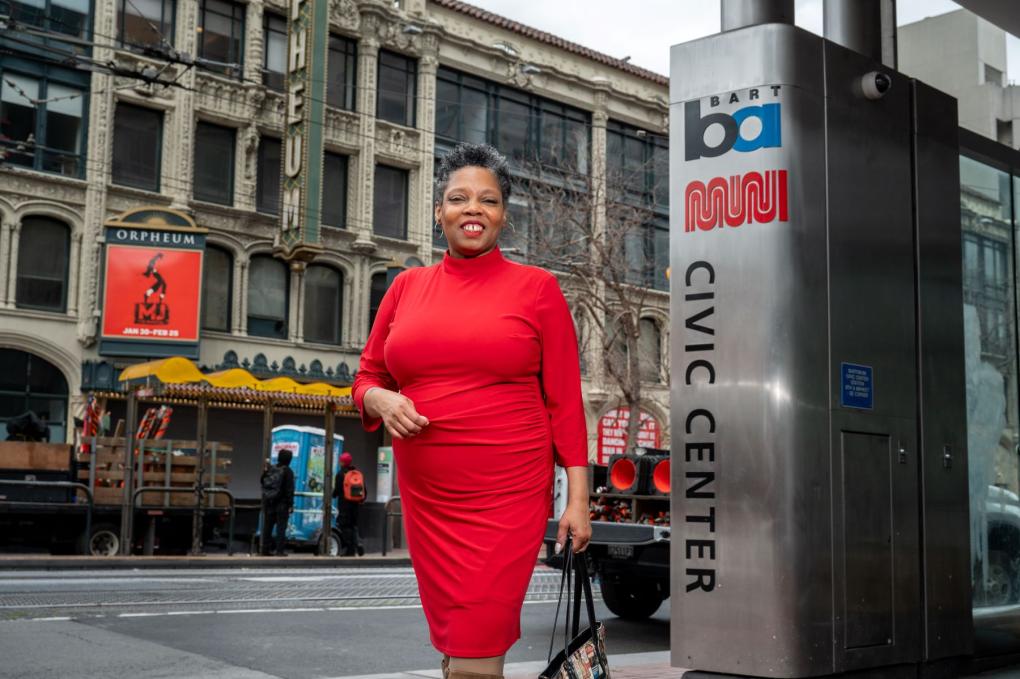
Sherri Young stands outside the Civic Center Station entrance across from the Orpheum Theatre.
Lifelong BART rider Sherri Young took a major gamble in 2015 when she transferred the African-American Shakespeare Company from a 200-seat theater about a mile from BART to a series of big venues in Downtown San Francisco.
The performance spaces she chose – the Herbst Theatre, Taube Wilsey Atrium, and Marines Memorial Theatre – are nestled in the heart of the city’s vibrant theater and arts district encompassing parts of Union Square, the Tenderloin, and Civic Center. The area is home to iconic venues like the War Memorial Opera House, the Orpheum Theatre, the American Conservatory Theater, and the Orpheum, among many others. All of these historic theaters are a short walk from BART or, in the case of the Orpheum, just steps from the station.
Weighing the pros and cons of moving her company, Sherri calculated if people could take transit to the company’s performances, she just might be able to fill all the seats in those giant theaters.
“You have to meet the community where they are,” Sherri said. And if community members don't live near Downtown San Francisco, they most likely lived by BART or agencies that connect to it. You can’t go to the theater, she thought, if you don’t have a means to get there.
Sherri is the Executive Director and Founder of the African-American Shakespeare Company. In September, it celebrates 30 years of classical theater produced and performed by artists as diverse as their audiences.
“I founded the company because there weren’t a lot of people like me on the stage, and there were even fewer in Shakespeare and works of that nature,” Sherri said. “It was a missed opportunity because the stories are wonderful – they're about being human. I asked myself: What if we told the story in a different setting with music and cultural icons that my community would be able to grasp better and feel compelled to come see?”
The organization’s cornerstone production is “Cinderella,” created by Sherri and company members and performed every December at the Herbst Theatre -- a 10-minute walk from Civic Center/UN Plaza Station. Other productions in 2024 included Dominique Morisseau’s “Pipeline,” about the complexities and nuances of Black parenting in the inner-city, and Shakespeare’s “The Taming of the Shrew.” The former was performed at Taube Wilsey Atrium Theater (an 11-minute walk from Civic Center/UN Plaza Station) and the latter at the Marines’ Memorial Theatre (a six-minute walk from Powell Street Station).

A promotional photo for “Cinderella” from 2022, starring Funmi "Lola" Awopetu in the title role.
In 2015, Sherri met Jill Buschini, who manages BARTable Co-Marketing Partnerships (learn more about these partnerships here). Sherri wanted to build the reputation of African-American Shakespeare Company and realized “we could do that through BART.” She signed a co-marketing agreement with BART so the two organizations could promote each other with no exchange of money.
"From the moment we met, we just clicked!” said Buschini. “Over the past 9+ years, Sherri and I have cultivated a co-marketing partnership that has allowed both of our organizations to reach new audiences and achieve greater marketing impact together. I've watched her organization grow and thrive, just as she’s seen BARTable expand—even through a pandemic! I think I can speak for both of us when I say we've both enjoyed the journey, and I feel honored to know her and work alongside her. I look forward to our continued partnership and collaboration to get more people on BART to experience her amazing productions!"
As part of the partnership, you’ll see the BARTable logo on many African-American Shakespeare Company materials, including their website and performance programs. In exchange, BART posts banners and digital advertisements around the system promoting the company’s performances. BARTable also runs an annual sweepstakes for “dinner and a show” at the African-American Shakespeare Company through its Contests and Deals program. Sherri considers BART “one of our best and most critical partners.”
“Small organizations like ours can’t afford to pay much into marketing,” Sherri said. She prefers those dollars go to people and program expenses. “BART helps us get the word out and make connections.” Besides, "You can go to dinner, a show, a bar, stay up late, then take the train home.”
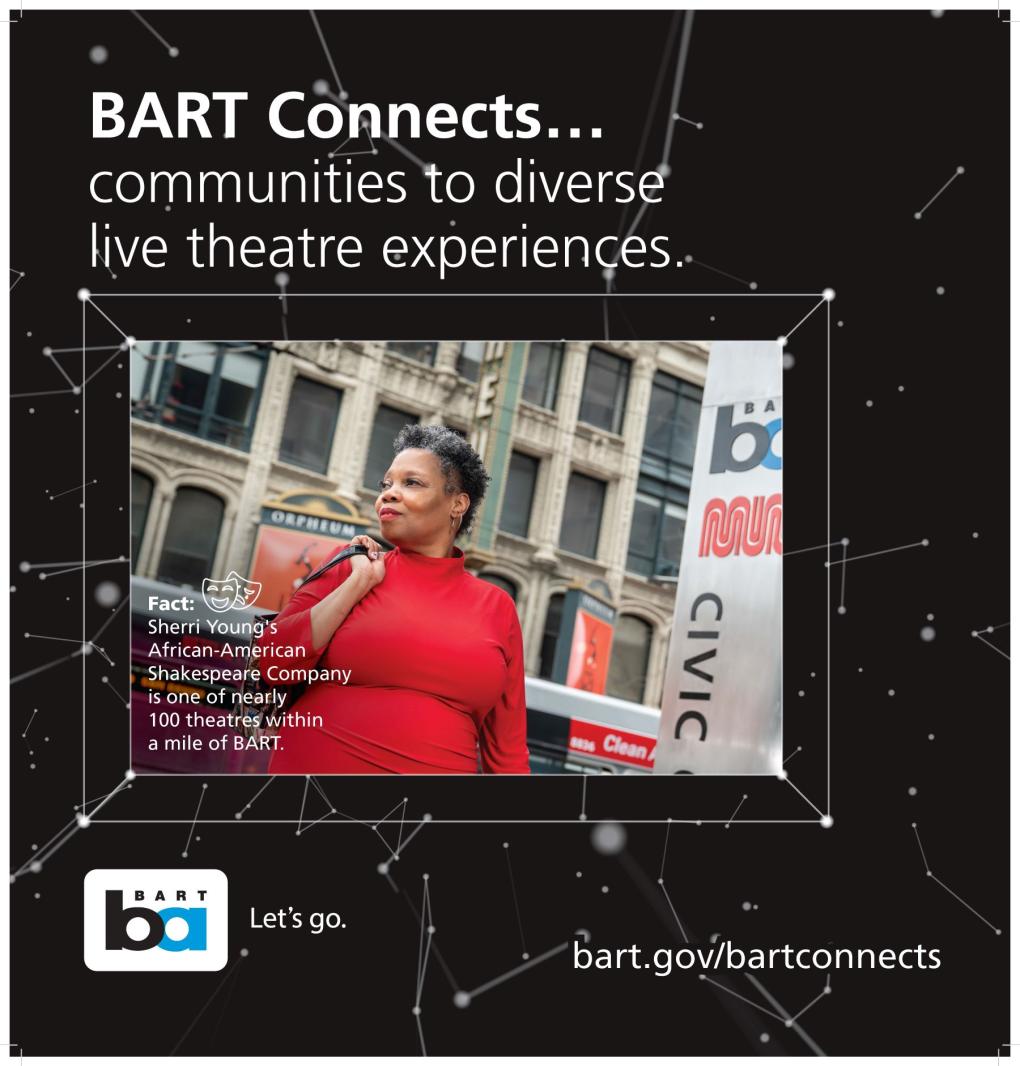
Sherri Young featured in a BART advertisement.
The relationship goes deeper than marketing. For Sherri, it’s all about connection.
“BART has physical extensions to communities, but we’re giving BART access to our community as well,” she said. BART and arts organizations like the African-American Shakespeare Company enrich and uplift one another. One gives people a place to go, the other gets people there. If patrons can’t find a way to the theater, the show won’t go on.
Because of that natural synergy, Sherri said "BART is going to be a lifelong partner of the company. We’re helping each other grow and succeed.”
The African-American Shakespeare Company was born more than thirty years ago as a one-time showcase in a small black box 50-seat theater with friends and scrounged costumes. It has since grown into a company of ten full-time employees that work with 11 teaching artists, and up to 80 actors, designers, and technicians every year.
In those thirty years, BART’s grown too. In 1994, BART had just 34 stations. Today, it has 50.
To borrow Sherri’s phrasing: “We’re growing! We’ve grown! We’re doing all the things! And we’re all in this together.”
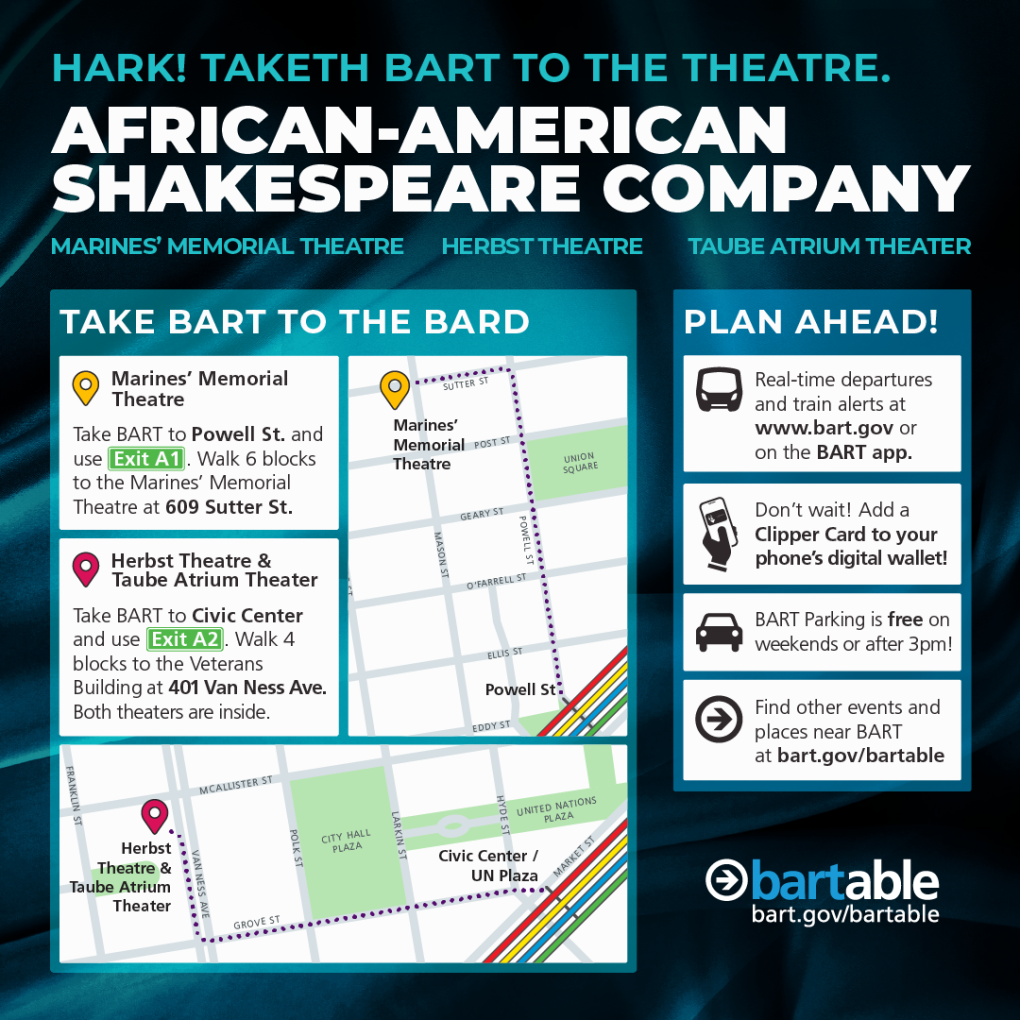
About BART Connects
The BART Connects storytelling series was launched in 2023 to showcase the real people who ride and rely on BART and illustrate the manifold ways the system affects their lives. The subjects of BART Connects will be featured in videos as well as a forthcoming marketing campaign that is slated to run across the Bay Area. Find all the stories at bart.gov/bartconnects.
The series grew out of BART's Role in the Region Study, which demonstrates BART’s importance to the Bay Area’s mobility, cultural diversity, environmental and economic sustainability. We conducted a call for stories to hear from our riders and understand what BART means to them. More than 300 riders responded, and a selection of respondents were interviewed for the BART Connects series.
BART Board Livestream
Live stream meetings will begin below with the Call to Order, which may not begin as scheduled. View past meetings here.
BART Board TV
Nov. 20: Join BART for a community meeting on BART’s sustainability progress and share your feedback
On Wednesday, Nov. 20, 5pm to 6:30pm, BART’s Sustainability Department invites the public to join a virtual community meeting for updates on BART’s sustainability progress and to share their thoughts and priorities moving forward.
To receive the meeting Zoom link, register by clicking here or scanning the QR code on the flyer below.
The meeting will gather perspectives and ideas from the community as BART moves forward in updating its 2017 Sustainability Action Plan for 2025. BART’s Sustainability Department will provide background on its sustainability vision and program; an overview of current efforts to update the action plan for 2025; and presentations on key topics (each followed by interactive polling), including energy/GHG emissions, water, waste, resilience and adaptation, transportation and land use planning, materials and construction practices, and rider and employee experience.
This will be followed by a Q&A and a discussion of next steps.
More on BART’s Sustainability Action Plan: The action plan identifies, evaluates, and prioritizes the most important actions BART can take to advance sustainability through Calendar Year 2035. The plan summarizes much of the existing sustainability work BART is doing and finds the best points to leverage sustainability in the future planning, design, construction, operations and ongoing maintenance of the system.
We hope to see you there!
To read more about BART’s Sustainability Program, visit bart.gov/sustainability. To read the 2017 Action Plan, click here.

BART awarded $25 million state grant for project to transform the North Berkeley BART Station
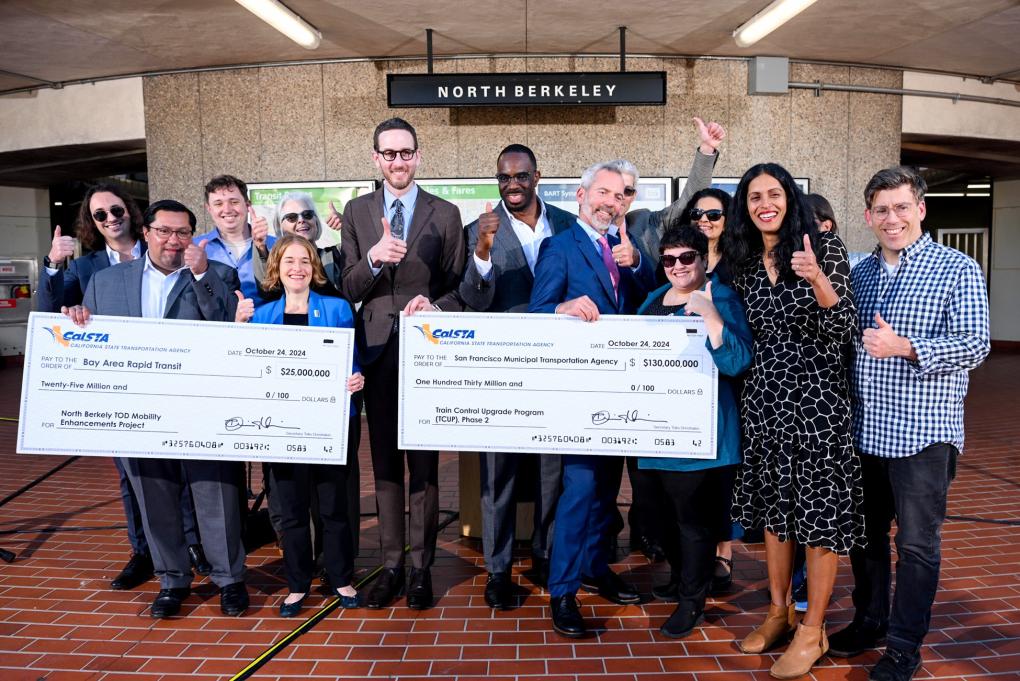
On Thursday, October 24, 2024, California Secretary of Transportation Toks Omishakin announced at the North Berkeley BART Station that BART has been awarded $25 million from the Cycle 7 Transit and Intercity Rail Capital Program (TIRCP) for the North Berkeley Transit-Oriented Development (TOD) Mobility Enhancements Project.
“This funding makes possible two plazas plus bike and pedestrian improvements, which will help transform the North Berkeley BART station area into a mixed-use, sustainable community,” says BART Board Director Rebecca Saltzman, who represents the station. “By enhancing access to public transit and improving bike and pedestrian infrastructure, projects like this will reduce dependency on personal vehicles.”
Key project components include BART rider parking within a TOD garage, publicly accessible open spaces including an intermodal transit plaza, and walking and biking enhancements around the station. The TOD will transform the main North Berkeley Station parking lot into housing and open space. The TIRCP funds are critical to supporting investments that enhance access to BART for current and future BART riders.
TIRCP funds will be used to enhance walking and biking infrastructure and augment multimodal connections. These enhancements are expected to boost ridership by facilitating safe pedestrian and bike access and promoting non-automotive transportation. The estimated total cost for the Mobility Enhancements Project is $37 million. Remaining funding sources are from local and state contributions.
The overall North Berkeley Station TOD project prioritizes affordable housing, aligns with BART’s TOD Policy goals and meets the strategic objectives of the TIRCP program. The project will consist of five residential buildings that will be built in phases.
BART estimates that the 739 new homes in the TOD, with approximately half affordable for households at or below 80% of Area Median Income, would generate roughly 750 new trips per day by 2031.
Top 21 BART accomplishments in 2021
2021 was the first full year we spent living in the midst of the pandemic. Despite the challenges, we accomplished many things to help serve the Bay Area. Improvements to the Rider Experience: We returned to near pre-pandemic levels of service and hours Monday through Saturday in August, with a commitment to
